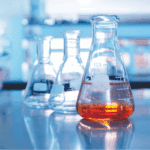On 16 April 2025, the European Commission unveiled the first Ecodesign for Sustainable Products Regulation (ESPR) and Energy Labelling Working Plan for 2025–2030. This strategic roadmap aims to improve product sustainability, boost the circular economy, and reduce environmental impacts across the EU.
What Is the Ecodesign for Sustainable Products Regulation (ESPR)?
The ESPR, effective since July 2024, repeals the existing Ecodesign Directive. It broadens the scope from energy-related products to nearly all physical goods, excluding just a few categories such as food and medicinal products. The regulation introduces ecodesign requirements focusing on durability, reparability, recyclability, energy efficiency, and the reduction of environmental footprints. A key requirement is the Digital Product Passport (DPP), which will provide accessible, product-specific sustainability data to consumers, businesses and competent authorities.
Key priorities in the 2025–2030 working plan
The first ESPR Working Plan outlines priority product groups based on factors such as environmental impact, market size, and potential for improvement. These priorities were determined through scientific assessments by the Joint Research Centre and extensive stakeholder consultations.
Final products:
- Textiles/Apparel (not including footwear): Targeting durability, recyclability, and microplastic reduction, with adoption of the legislation expected in 2027. Information requirements for this product category will align with the revised Textile Labelling Regulation.
- Furniture: Focusing on resource use and waste generation, with adoption anticipated for 2028.
- Tyres: Addressing recycled content and recyclability, with regulations projected for 2027.
- Mattresses: Targeting waste generation, length of lifetime and material efficiency, with adoption timeline anticipated to be 2029.
Intermediate products:
- Iron & Steel: Focusing on resource efficiency and environmental impact, with adoption expected in 2026.
- Aluminium: Aiming for similar improvements, with adoption anticipated for 2027.
Energy-related products:
The plan includes updates for various appliances and equipment, such as:
- Household Washing Machines and Dishwashers: New requirements expected in 2026.
- Electric Motors and Variable Speed Drives: Regulation projected for adoption in 2028.
- Refrigerating Appliances: Measures anticipated for adoption by 2028.
Horizontal Measures:
The plan also introduces cross-cutting requirements, including:
- Repairability, including scoring: To inform consumers and encourage product designs that are easier to repair, expected to be adopted in 2027. The scope for this measure could include consumer electronics and small household appliances.
- Recycled Content and Recyclability for Electrical and Electronic Equipment: Aiming to enhance circularity, with measures anticipated for adoption in 2029.




